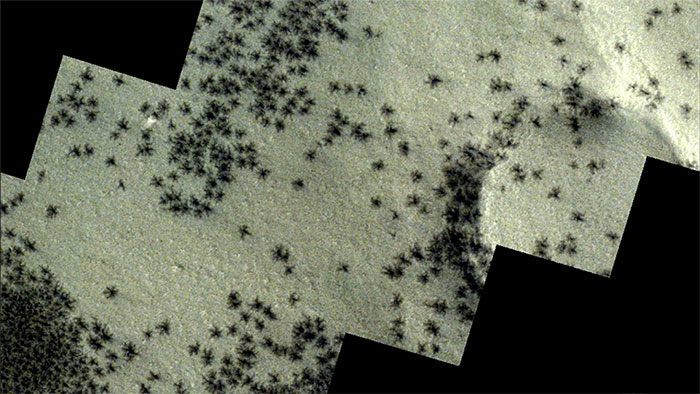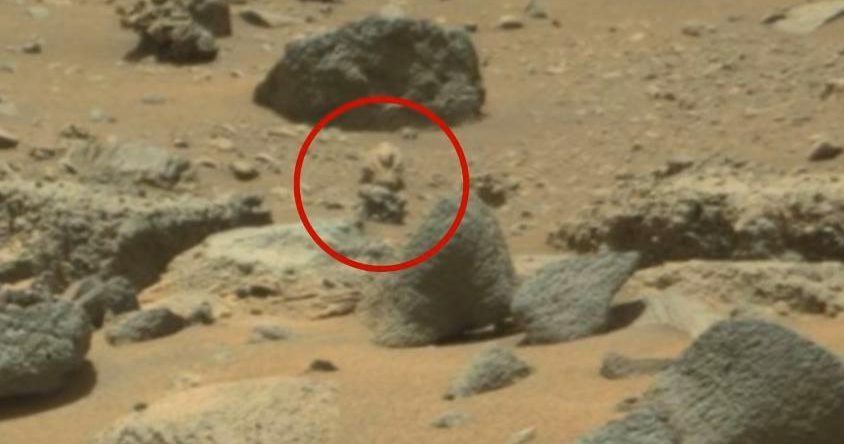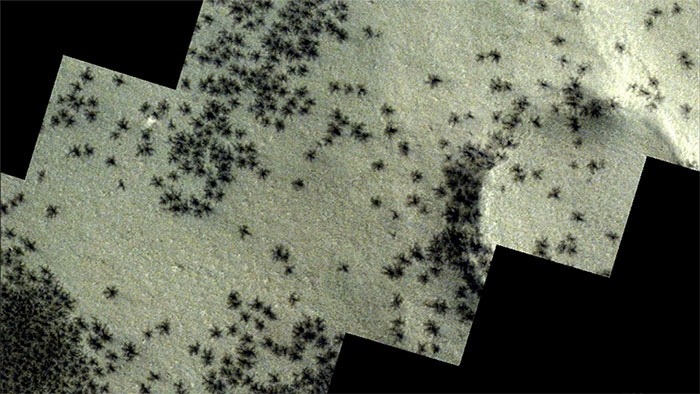In a striking series of images captured by the European Space Agency (ESA) in the southern polar region of Mars, what appears to be enormous spider-like formations sprawl across the surface of the Red Planet. According to reports from Newsweek on April 25, these “spiders” were observed near a region known as the “Inca City” by ESA’s ExoMars Trace Gas Orbiter and Mars Express spacecraft. The uncanny resemblance to arachnids has left many with arachnophobia shuddering at the sight.

The imagery evokes imagery of hundreds of black spiders on Mars The imagery evokes imagery of hundreds of black spiders captured by the ExoMars Trace Gas Orbiter on Mars – (Image: ESA)
However, these formations are not actual spiders; they are dark spots that have formed on the surface of Mars due to gas eruptions penetrating through layers of carbon dioxide (CO2) ice. While the resemblance to spiders may trigger unease in some viewers, the explanation behind these features lies in the planet’s unique geological and atmospheric processes.

The “spiders” phenomenon, officially known as araneiform terrain, is a fascinating example of Mars’ dynamic surface. These formations typically appear in the planet’s polar regions during the Martian springtime when frozen CO2 begins to thaw and release gas trapped beneath the surface. As the gas escapes, it carries dark sediments with it, creating intricate spider-like patterns on the surface.
Scientists have long been intrigued by these enigmatic features and have studied them extensively to better understand Mars’ climate and geology. The presence of araneiform terrain indicates the presence of volatile substances beneath the Martian surface and offers valuable insights into the planet’s past and present atmospheric conditions.

The ESA’s ExoMars Trace Gas Orbiter and Mars Express spacecraft have been instrumental in capturing high-resolution images of Mars’ surface, allowing researchers to study these phenomena in unprecedented detail. By analyzing the composition and distribution of araneiform terrain, scientists hope to unravel the mysteries of Mars’ ancient climate and the processes that have shaped its landscape over billions of years.
The discovery of spider-like formations on Mars highlights the planet’s geological complexity and underscores the importance of continued exploration and research. As humanity’s understanding of Mars deepens, so too does our appreciation for the dynamic forces that have shaped the Red Planet’s surface.
the recent images of spider-like markings on Mars’ southern pole captured by the European Space Agency serve as a reminder of the planet’s geological diversity and the intricate interplay of its atmospheric and surface processes. While these formations may evoke eerie associations with arachnids, they are a testament to the fascinating mysteries waiting to be uncovered on the Red Planet. As exploration efforts continue, we can expect to uncover even more captivating insights into the history and evolution of Mars.

